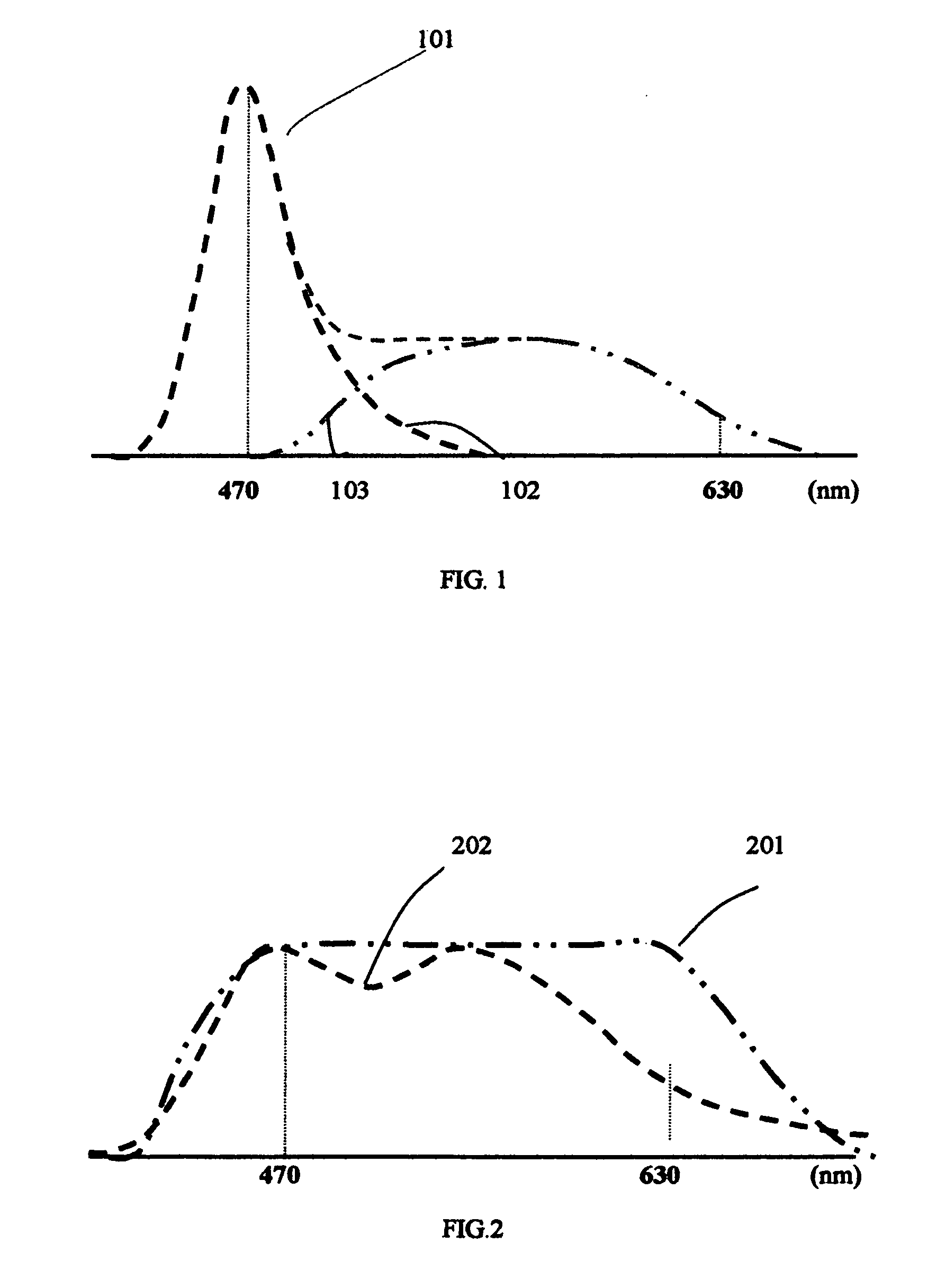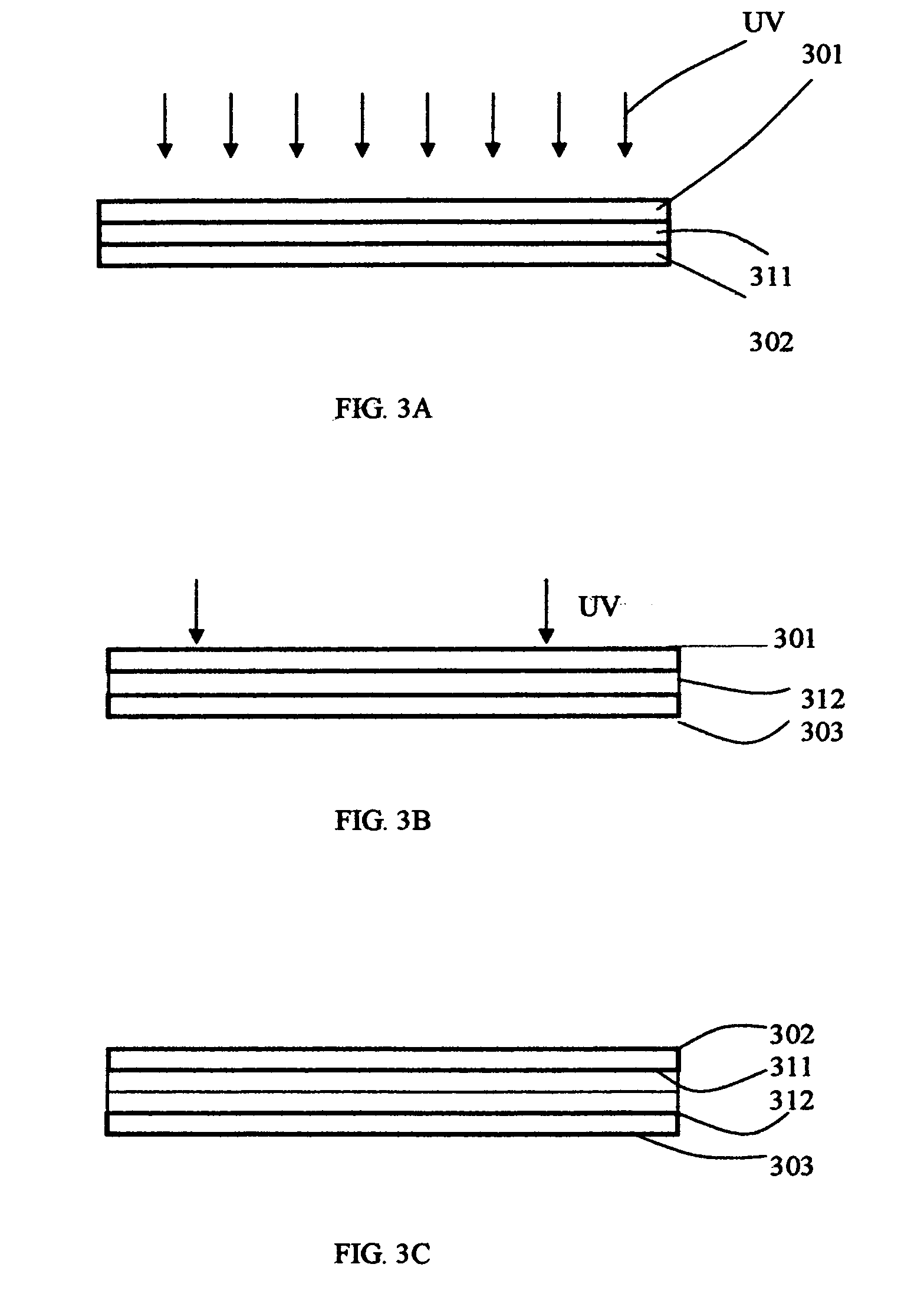Brightness and color enhancement film for LED TV and monitor
a color enhancement film and led tv technology, applied in the field of optical enhancement films, can solve the problems of increasing energy consumption, reducing the brightness of the display, and the cost of further reducing the brightness of the led bu, and achieve the effect of cost-effectiveness
- Summary
- Abstract
- Description
- Claims
- Application Information
AI Technical Summary
Benefits of technology
Problems solved by technology
Method used
Image
Examples
example 1
[0071]On a sheet of 5-mil polyester film (Milar, Dupond, USA) a cholesteric mixture 511 with the following ratio:[0072]MEK 66%[0073]ChM-5 33.9%[0074]Irgacure 184 0.1%.
was coated by a slot die coater at a speed of 1.5 m / min in a class 1000 yellow light clean room environment. After the solvent is evaporated, the web is laminated with a TAC film 501 by a lot rubber nip at 125 C at a speed of 1.5 in / minute. In the first heating chamber at temperature 33 C, a medium pressure UV lamp was exposed at the intensity 2.5 mw / cm2 for 5 second. Thus a blue color thin layer was initially formed. And then the web was immediately moving into the second heating chamber with a temperature gradient from 28 C to 26 C while the UV dosage was kept at 0.5 mw / cm2 for 4 min. After the UV light exposure, the PET film was peeled off. The polymerized CLC coating 511 was left on the TAC film 501. Finally, a retardation film 502 coated with a pressure sensitive adhesive (PSA) layer 520 was laminated on the web t...
example 2
[0075]On a sheet of 5-mil polyester film (Milar, Dupond, USA) a cholesteric mixture 511 with the following ratio:[0076]MEK 66%[0077]ChA-5 33.9%[0078]Irgacure 184 0.1%
was coated by a slot die coater at a speed of 1.5 m / min in a class 1000 yellow light clean room. After the solvent is evaporated, the web is then laminated with a TAC film 501 by a hot rubber nip laminator at a speed of 1.5 in / minute. In the first heating chamber at temperature 25 C, a medium pressure UV lamp was exposed at the intensity 02.5 mw / cm2 for 5 second. Thus a blue color thin layer was initially formed. The web was immediately moving into the second heating chamber at a temperature gradient from 18 C to 16 C while the UV dosage was kept at 0.5 mw / cm2 for 4 min. After the UV light exposure, the temporary PET film was peeled off. The polymerized CLC coating 511 was left on the TAC film 501. Finally, a retardation film 502 with 25 μm pressure sensitive adhesive (PSA) layer 520 was laminated onto the web 511 to fo...
PUM
| Property | Measurement | Unit |
|---|---|---|
| thickness | aaaaa | aaaaa |
| thickness | aaaaa | aaaaa |
| wavelength | aaaaa | aaaaa |
Abstract
Description
Claims
Application Information
 Login to View More
Login to View More - R&D
- Intellectual Property
- Life Sciences
- Materials
- Tech Scout
- Unparalleled Data Quality
- Higher Quality Content
- 60% Fewer Hallucinations
Browse by: Latest US Patents, China's latest patents, Technical Efficacy Thesaurus, Application Domain, Technology Topic, Popular Technical Reports.
© 2025 PatSnap. All rights reserved.Legal|Privacy policy|Modern Slavery Act Transparency Statement|Sitemap|About US| Contact US: help@patsnap.com



